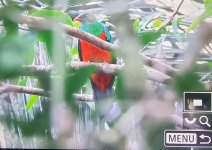TicoTyler
Tyler Wenzel

Reminds me of an encounter I had. I was birding with a group on the boardwalk at Sacha Lodge in Ecuador. We briefly heard an Undulated Tinamou in the thick brush near the boardwalk but try as we might, we were unable to see it. We waited quite awhile but it never showed itself. As we were ready to move on I thought it would be a good idea to hang back and take care of some business behind a thick tree next to the boardwalk. As I was standing there doing my business, the Undulated Tinamou stepped out, giving close, fantastic views, even without my being able to use my binoculars. Given my situation, I couldn’t really call out to the group, and by the time I was done, the bird was gone. I was the only one to have seen the elusive tinamou.
Dave
Costa Rica has 5 tinamous. Normally you hear them before you see them. In some weird twist of fate, 3 of the 5 (Great, Slaty-breasted, and Highland) as lifers I saw before I heard.










